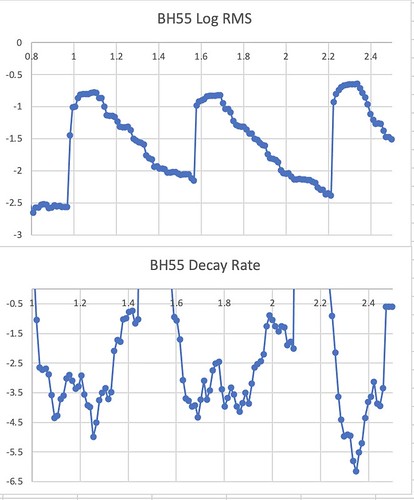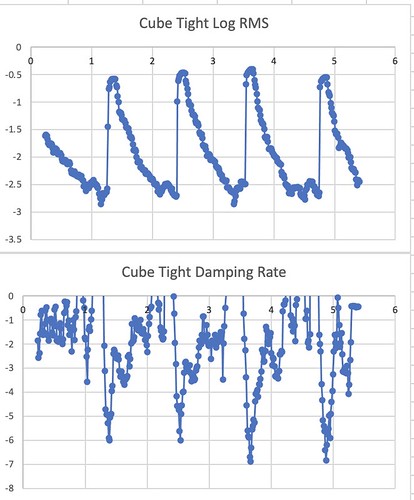Shashin
Well-known member
Now you just need a set of arms long enough to mount the camera...inspired by the posts before - added the 4-segment legs to the 3-segment legs and got a 2.7m Tripod.
View attachment 187585
Great to see you here. Join our insightful photographic forum today and start tapping into a huge wealth of photographic knowledge. Completing our simple registration process will allow you to gain access to exclusive content, add your own topics and posts, share your work and connect with other members through your own private inbox! And don’t forget to say hi!
Now you just need a set of arms long enough to mount the camera...inspired by the posts before - added the 4-segment legs to the 3-segment legs and got a 2.7m Tripod.
View attachment 187585
I did consider ladder needs when I got a tall tripod. With the center column lowered, I can just reach the camera. As appealing as a Gitzo Giant or RRS 45L with center column would be, I can't see any way of using them in the wild. I suppose tripods could be made with rungs like an antenna on one leg...Now you just need a set of arms long enough to mount the camera...
Another possible option is an external HDMI monitor and a long cable, although a wireless phone app definitely the way to go if one is available.If you can get a remote app on your smart phone, you don't need the camera viewfinder.





I know cello bows.@MGrayson , I agree with your assessment that the result, the photo, is all that matters. Lab tests and specs may be interesting, however, they are not very useful for real-world application. I bought a new cello bow a few years ago. There is a lot written about how different materials should be better because of the speed with which vibrations are transferred, such as carbon fiber or pernambuco. I tested about 8 bows with my cello and one was noticeably better. It was pernambuco, just like the other three finalists. Incidentally, it cost far more than a big carbon fiber tripod.
As you know, I have been using a wood tripod for over 15 years. If I were to get another, it would probably be your Gitzo model. Thank you for the evaluation.
 Untitled by Matthew Grayson, on Flickr
Untitled by Matthew Grayson, on FlickrHi Matt,Tripod Head Tests
Disclaimer: I use the word "stiffness" when I should be talking about damping. A very stiff spring can vibrate forever. I'm measuring how fast the vibrations damp down.
Some interestin seismometer results. I mounted the Fuji X-H1 with 100-400 zoom for rotational inertia. The sturdiest support I had on hand was a Gitzo 3 series with no legs extended. To make sure I wasn't just measuring the tripod, I tried a BH-30, BH-55, and a Cube. If the two RRS heads measured the same, I'd know that THEY weren't the limiting factor. In each case, I recorded there wiggly line after hitting the lens, downloaded the data, computed RMS and fit the exponential decay. The decay rates were amazingly consistent for each head. When hitting from the side, the Cube and BH-55 both showed decay rates of 3.3 to 3.5, or about a damping factor of ~3000x per second. The BH-30 had a decay rate of 1.78, a reduction of less than 100x per second! So we're not just getting the tripod.
I'll spare you all the data, but this is a typical plot of Log(RMS) over time:
Untitled by Matthew Grayson, on Flickr
Here's the strange bit. The Cube was slightly stiffer. This puzzled me, as thecentercolumn showed the BH-55 as much stiffer than the Cube. Then I tried hitting the top of the lens. The gears in the cube control up and down motions, not rotational about the vertical axis. And indeed! The Cube came in at 2.25 and the BH-55 at over 4! (Thats 10,000x per second damping) So in the first "hit the lens on the side" test, I was seeing the best of the Cube and the worst of the BH-55 (rotation about the vertical post, I suppose). Vertically it was the other way, and the total score would put the BH-55 ahead of the Cube.
I'm still curious about what happens when the Acratech is mounted on a leveling base. Unlike the geared Arca L60 and L75, the Acratech leveling base is a ball design, and so "should" be better. We'll see!
John,Hi Matt,
Thanks for sharing the results of your analysis. Quick question: in the vertical test on the Cube, did you find the decay to be dependent on how tight or loose the friction was set on the adjustment wheels?
John
 Untitled by Matthew Grayson, on Flickr
Untitled by Matthew Grayson, on Flickr Untitled by Matthew Grayson, on Flickr
Untitled by Matthew Grayson, on Flickr by Matthew Grayson, on Flickr
by Matthew Grayson, on Flickr Untitled by Matthew Grayson, on Flickr
Untitled by Matthew Grayson, on FlickrWhat is your target criteria? A 400mm lens on a APS-C camera is very different from a 30mm on an MFD one. Vibration is easy to measure, but how are you going to corelate that to image sharpness? Just curious how you would model that.Why am I focusing on damping rate? I have a piano where a note will sound for a VERY long time. I don't want a system where small vibrations may oscillate quickly (and are therefore smaller in the first place), but which don't go away. In a long exposure, which is more important? I dunno. I'll go look at my frequencies...
 Untitled by Matthew Grayson, on Flickr
Untitled by Matthew Grayson, on FlickrOh, I make no claims as to what matters in the field. Photography is a mechanical art as well as an aesthetic one. (See, e.g., musical instruments). This is like measuring the decay of piano strings. Interesting, but what matters is how the pianist uses them. I mean, we can calculate the expected blur size, but I'd look at what good photographers actually DO. Those who use wooden tripods have obviously learned how to use them! John, unless I am much mistaken, uses long lenses, long exposures, and a cube to stunning effect.What is your target criteria? A 400mm lens on a APS-C camera is very different from a 30mm on an MFD one. Vibration is easy to measure, but how are you going to corelate that to image sharpness? Just curious how you would model that.
